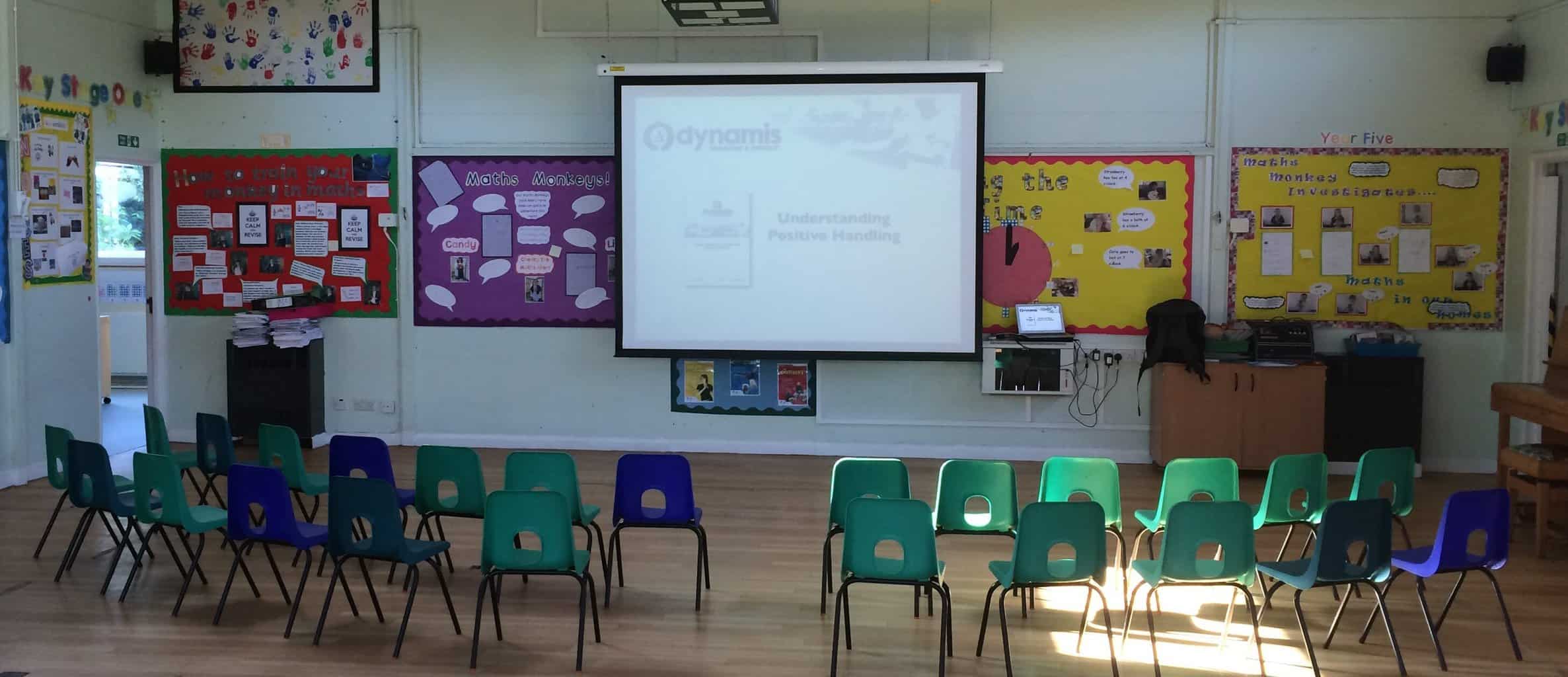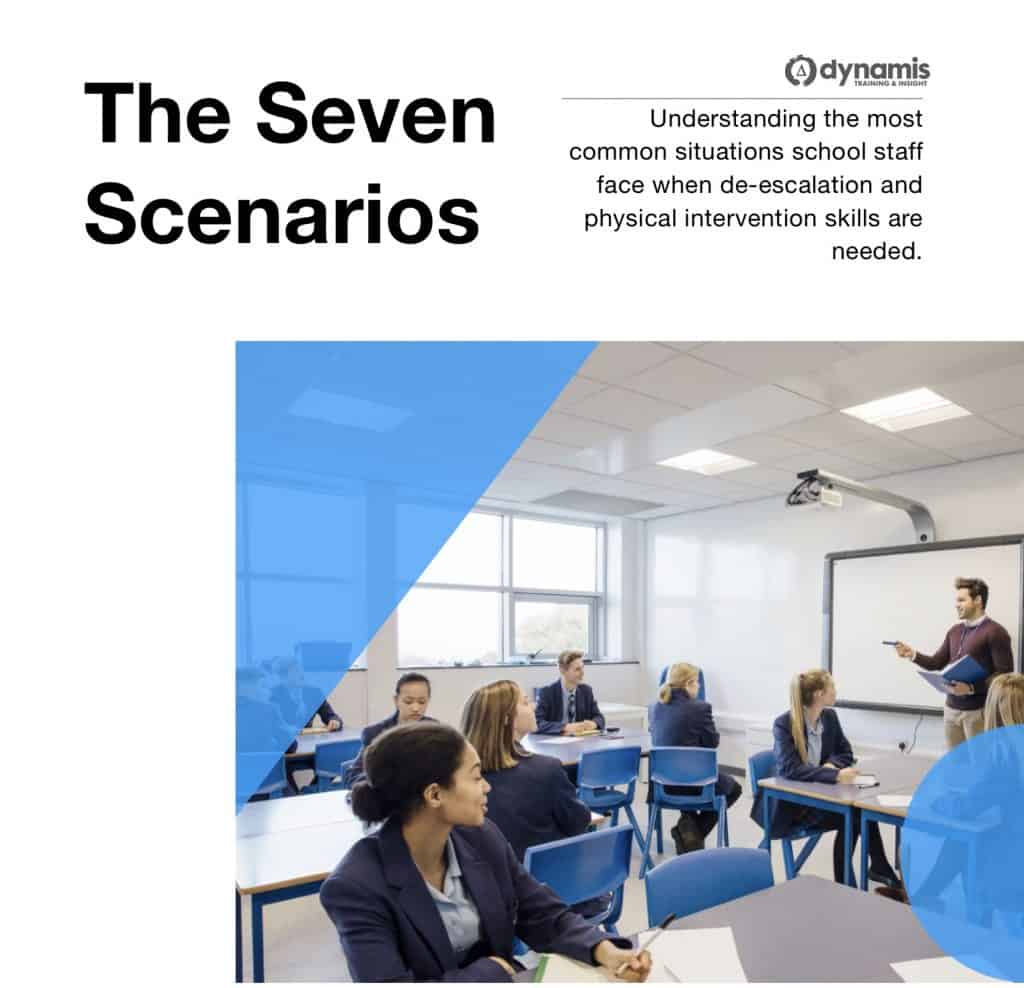Positive Handling Plans
Positive Handling Plans should consider the wide range of risks involved in the types of situations where these interventions are potentially needed. Is it possible for a four year old child to lash out and send their teacher or teaching assistant to hospital? How about giving them a life-changing injury to their shoulder, their back or neck?
Well, it surprises many, but not all, of our training groups to hear of one incident in particular that we heard about when a child from a Reception class put not one but TWO teachers in the hospital in a single incident at a school in London in 2012.
“So” (I can hear you say) “How could a 4-year-old put two grown adults in hospital within a few minutes of one another?”
At the risk of starting a rash of carefully-planned toddler-uprisings in classrooms across the land, are some of the ways we (hypothetically, of course) would advise a Four-Year Old to cause mayhem in a classroom:
1: Divide and conquer!
Dealing with one teacher at a time is a lot easier for him, because it will allow him to focus all his energy and attention in one place, on one person. As we mentioned in a previous post, for physical interventions and dealing with particularly disruptive behaviour, the number is ALWAYS TWO!
2: Fight Dirty!
Because he has lost control, there is little cognitive input into his actions and so when he lashes out, it won’t be with the Queensbury Rules of fair fighting! As one head-teacher told me “they have nothing to lose at that point” so the child will bring all his resources to bear at full strength. He may head-butt, he may bite, spit, scratch eyes, pull, drag, swing…every type of survival behaviour lurking in the primal parts of his brain. This, in contrast to the education professional dealing with him who will be physically restraining themselves (ironically) in order to safely lead him out of harm’s way.
3: Use the environment / whatever comes to hand!
Most classrooms are – quite rightly – full of things to pick up, touch, explore, draw with and make with. Unfortunately, a lot of these things can also be used to hurt others with, if the person who picks them up is having an ‘out-of-control’ moment. The ubiquitous scissors, sharpened pencils and even the chairs may be used as offensive weapons when the going gets particularly tough!
4: Don’t give up! No Retreat, no Surrender!
Having quickly passed through a triggering phase where some stimulus invigorated his more primal self, the child is quickly hooked into a negative vortex. A gravity-well of self-centred survival behaviour is engaged and only vigourous action and physical expression will do. He won’t give up, won’t give in!
Now, I am not suggesting for a moment that the average Reception-year child is aware of or consciously cultivating these strategies…but the fact is that they are the most impactful factors in any situation where teaching staff have an explosive four-year-old on their hands and need to lead him to safety.
To reduce risk when working with violent/risky behaviour in Early Years, here’s what you should have in your Positive Handling Plans
-
Always work as a team and wherever possible engage physically with good teamwork.
-
Develop or Find tactics which take into account all the different behaviours you may encounter: Pulling, Pushing, Punching/Slapping, Head-movement, Spitting, Biting, Scratching, Kicking, Weight displacement (e.g. dropping)
-
Employ Risk Assessment processes to place the right children in the right rooms with the right access to the right things. Arrange your rooms along the same lines, consistent with the risk level at your school for your children.
-
Deploy a consistent set of verbal templates, such as the Persuasion Sequence and others from the excellent Verbal Defence and Influence methodology. One of our maxims is: “Yes, we may end up in a physical intervention, but we will get there less often and we will end the intervention sooner because of our verbalisation skills”. Consistent verbalisations allows you to sound and look professional while treating your children with dignity and showing them respect in the most difficult of circumstances .
———————————————-
Gerard O’Dea is a conflict management, personal safety and physical interventions training consultant who often helps to create robust Positive Handling Plans. He is the training director for Dynamis, a specialist in personal safety and violence reduction initiatives and the European Adviser for ‘Verbal Defense and Influence’, a global programme which addresses the spectrum of human conflict. www.dynamis.training




